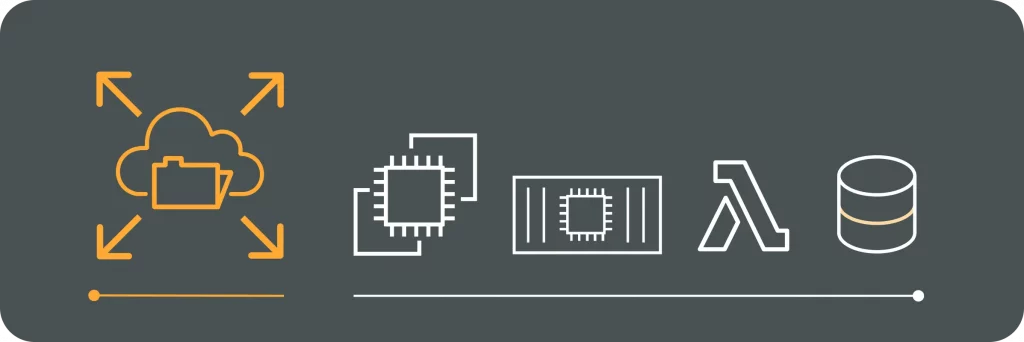In today’s fast-paced world of technology, optimizing Kubernetes container performance has become a vital aspect of ensuring the smooth operation of applications in a cloud-native environment. With the ever-increasing demand for scalability and efficiency, it is crucial to understand the intricacies involved in maximizing the performance of Kubernetes containers. This article will delve into the various aspects of optimizing Kubernetes container performance, from the basics of Kubernetes containers to the troubleshooting of performance issues. By the end of this article, you will have gained a comprehensive understanding of the techniques and strategies required to enhance the performance of your Kubernetes containers.
Understanding Kubernetes Container Performance
Before diving into the intricacies of optimizing Kubernetes container performance, it is essential to have a solid foundation of understanding regarding Kubernetes containers. Kubernetes containers are a key component of the Kubernetes ecosystem, which enables the effortless deployment, scaling, and management of application containers across a cluster of nodes. By efficiently utilizing system resources and isolating applications, Kubernetes containers provide an environment that optimizes performance. To truly optimize performance, it is crucial to understand the underlying aspects of Kubernetes containers and the key performance indicators associated with them.
The Basics of Kubernetes Containers
The foundation of Kubernetes containers lies in their ability to encapsulate applications and their dependencies into a single package. This package includes the application code, runtime, libraries, and system tools required for the application to run successfully. By adopting a containerized approach, Kubernetes containers enable consistency across different environments, making it easier to deploy and manage applications at scale.
Furthermore, Kubernetes containers leverage containerization technology, such as Docker, to provide a lightweight and isolated runtime environment for applications. This isolation ensures that each container operates independently, without interfering with other containers running on the same node. It allows for efficient resource allocation, as containers can be dynamically scaled up or down based on demand, ensuring optimal performance and resource utilization.
Key Performance Indicators for Containers
Monitoring and measuring the performance of Kubernetes containers is paramount to ensure optimal efficiency. Key performance indicators (KPIs) provide valuable insights into the behavior and performance of containers. Metrics such as CPU utilization, memory consumption, and network latency enable administrators to identify potential bottlenecks and make informed decisions to improve overall container performance. By analyzing these KPIs, performance optimization becomes a systematic and data-driven process, leading to enhanced application efficiency.
Additionally, container orchestration platforms like Kubernetes offer built-in monitoring and logging capabilities, allowing administrators to gain real-time visibility into container performance. These platforms provide comprehensive dashboards and alerts, enabling proactive monitoring and troubleshooting. By leveraging these monitoring tools, administrators can identify performance issues early on and take necessary actions to mitigate them, ensuring smooth and uninterrupted application operations.
The Importance of Performance Optimization
As organizations increasingly rely on cloud-based infrastructure and microservices architecture, the significance of performance optimization cannot be overstated. Efficient use of resources not only improves application response time but also has cost implications, making it a vital consideration for businesses of all sizes.
Performance optimization goes beyond just enhancing speed; it is a strategic approach to ensuring that applications operate at their peak efficiency. By fine-tuning various aspects of the system, such as network configurations, database queries, and code algorithms, organizations can achieve optimal performance levels that drive business success.
Impact on Application Efficiency
Optimizing Kubernetes container performance directly impacts the efficiency of applications running within the containers. By ensuring that resources are allocated optimally and that the containers are configured correctly, applications can deliver faster response times and handle increased workloads more effectively. Application efficiency is a critical factor in providing a seamless user experience and maintaining high levels of customer satisfaction.
Moreover, improved application efficiency leads to better scalability, allowing businesses to adapt to changing demands without compromising performance. Scalability is essential in today’s dynamic market landscape, where sudden spikes in user traffic or data processing requirements can occur unexpectedly.
Cost Implications of Performance
Optimizing performance is not only about enhancing the user experience but also about minimizing costs. Efficiently managing resources and maximizing the utilization of Kubernetes containers result in cost savings. By accurately allocating resources, organizations can reduce unnecessary spending on infrastructure and avoid overprovisioning, leading to financial benefits in the long run.
Furthermore, cost implications extend beyond immediate savings. By investing in performance optimization strategies, businesses can future-proof their operations and ensure that they are well-positioned to handle growth and expansion without incurring exorbitant infrastructure costs. This proactive approach to cost management aligns with long-term sustainability goals and enhances overall business resilience.
Techniques for Optimizing Kubernetes Containers
To achieve optimal performance, several techniques can be employed to optimize Kubernetes containers. These techniques encompass resource allocation and management as well as adopting container configuration best practices.
When it comes to resource allocation and management in Kubernetes containers, understanding the resource requirements of your applications is crucial. By conducting thorough analysis and profiling of your applications, you can accurately determine the CPU and memory needs of each container. This information is vital for effectively managing resources, preventing resource contention, and ensuring that applications perform at their peak efficiency. Implementing Kubernetes resource limits and requests, coupled with robust monitoring tools, enables you to fine-tune resource allocation and management for optimal performance.
Resource Allocation and Management
Understanding the resource requirements of your applications is essential in managing Kubernetes containers effectively. By allocating and managing resources such as CPU and memory based on the specific needs of each container, you can prevent resource contention and ensure that applications perform at their best. Utilizing Kubernetes resource limits and requests, along with monitoring tools, allows for efficient resource allocation and management.
Container Configuration Best Practices
Properly configuring Kubernetes containers is paramount for optimizing performance. Leveraging best practices such as limiting container resources, avoiding unnecessary system calls, and efficiently utilizing container images can significantly impact performance. Additionally, adopting container orchestration patterns and using lightweight container runtimes can further improve efficiency.
Optimizing Kubernetes containers goes beyond just resource allocation and configuration. It also involves implementing effective networking strategies to enhance communication between containers and external services. Utilizing Kubernetes network policies, service meshes, and load balancing techniques can streamline network traffic, improve security, and boost overall container performance. Moreover, integrating container security measures, such as image scanning and runtime protection, is essential for safeguarding your Kubernetes environment against potential threats.
Monitoring Kubernetes Container Performance
Continuous monitoring of Kubernetes container performance plays a vital role in identifying potential issues, optimizing resource allocation, and ensuring smooth operation. By leveraging performance monitoring tools and analyzing performance metrics, administrators can proactively address any bottlenecks or inefficiencies.
Ensuring the optimal performance of Kubernetes containers involves a multifaceted approach that goes beyond just monitoring. It requires a deep understanding of the application workloads, infrastructure dependencies, and the dynamic nature of containerized environments. By adopting a holistic view of performance management, organizations can better align their monitoring efforts with business objectives.
Tools for Performance Monitoring
There are a multitude of tools available for monitoring Kubernetes container performance. Tools such as Prometheus, Grafana, and Datadog offer comprehensive monitoring capabilities, allowing for real-time visibility into cluster health, resource utilization, and more. Implementing these tools can provide invaluable insights to guide performance optimization efforts.
Additionally, integrating logging and tracing tools such as ELK Stack (Elasticsearch, Logstash, Kibana) and Jaeger can offer a more comprehensive view of containerized applications. These tools enable administrators to correlate performance metrics with application logs and traces, facilitating root cause analysis and troubleshooting of performance issues.
Interpreting Performance Metrics
Collecting performance metrics is only valuable if they can be accurately interpreted and acted upon. Understanding the significance of metrics such as CPU usage, memory utilization, and network latency enables administrators to identify potential performance bottlenecks and take appropriate action. Advanced techniques such as anomaly detection and predictive analysis can further enhance performance monitoring and optimization.
Moreover, establishing baseline performance metrics and setting up alerts based on predefined thresholds can help administrators proactively detect and mitigate performance issues before they impact end users. By continuously refining monitoring strategies and leveraging automation tools for remediation, organizations can ensure the reliable and efficient operation of their Kubernetes containers.
Troubleshooting Performance Issues
Despite the best efforts to optimize Kubernetes container performance, issues can arise that impact overall efficiency. Familiarizing yourself with common performance problems and strategies for troubleshooting is crucial in effectively addressing and resolving them.
Common Performance Problems
Performance problems in Kubernetes containers can stem from various sources, including misconfigurations, resource constraints, and application bottlenecks. By understanding and being able to identify common performance problems, administrators can quickly diagnose and rectify issues, ensuring smooth operation of applications.
Strategies for Performance Troubleshooting
When faced with performance issues, employing effective troubleshooting strategies is essential. Techniques such as analyzing logs, examining resource allocation, and utilizing debugging tools can help pinpoint the root causes of performance degradation. By systematically addressing these issues, administrators can restore optimal performance and minimize any impact on application users.
In conclusion, optimizing Kubernetes container performance involves a comprehensive understanding of Kubernetes containers, key performance indicators, and techniques for resource allocation, container configuration, performance monitoring, and troubleshooting. By following best practices and leveraging performance optimization strategies, organizations can achieve optimal application efficiency, cost savings, and a seamless user experience. Continuously monitoring and iteratively improving container performance ensures that applications running in Kubernetes containers consistently meet the demands of modern cloud-native environments.




